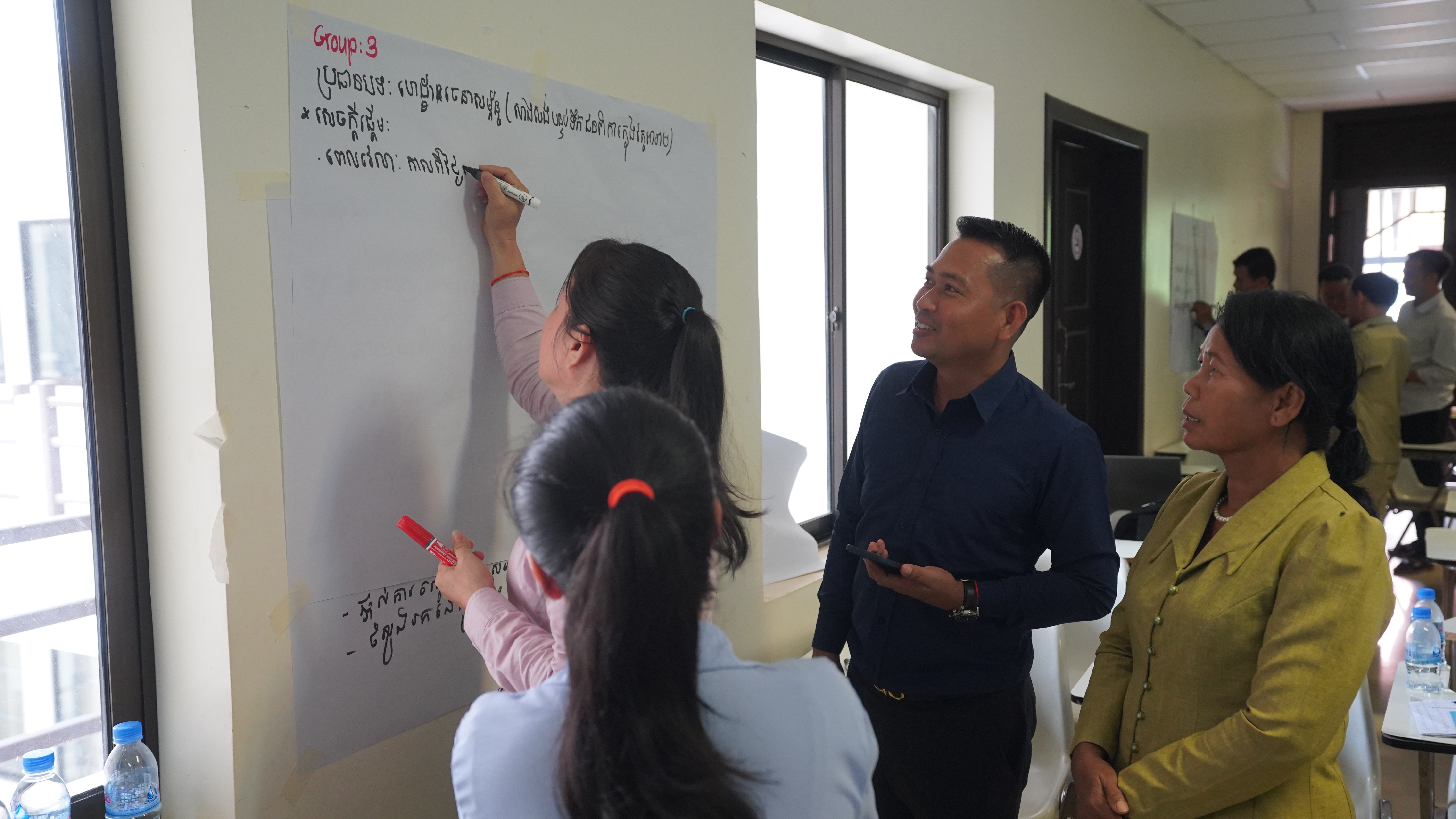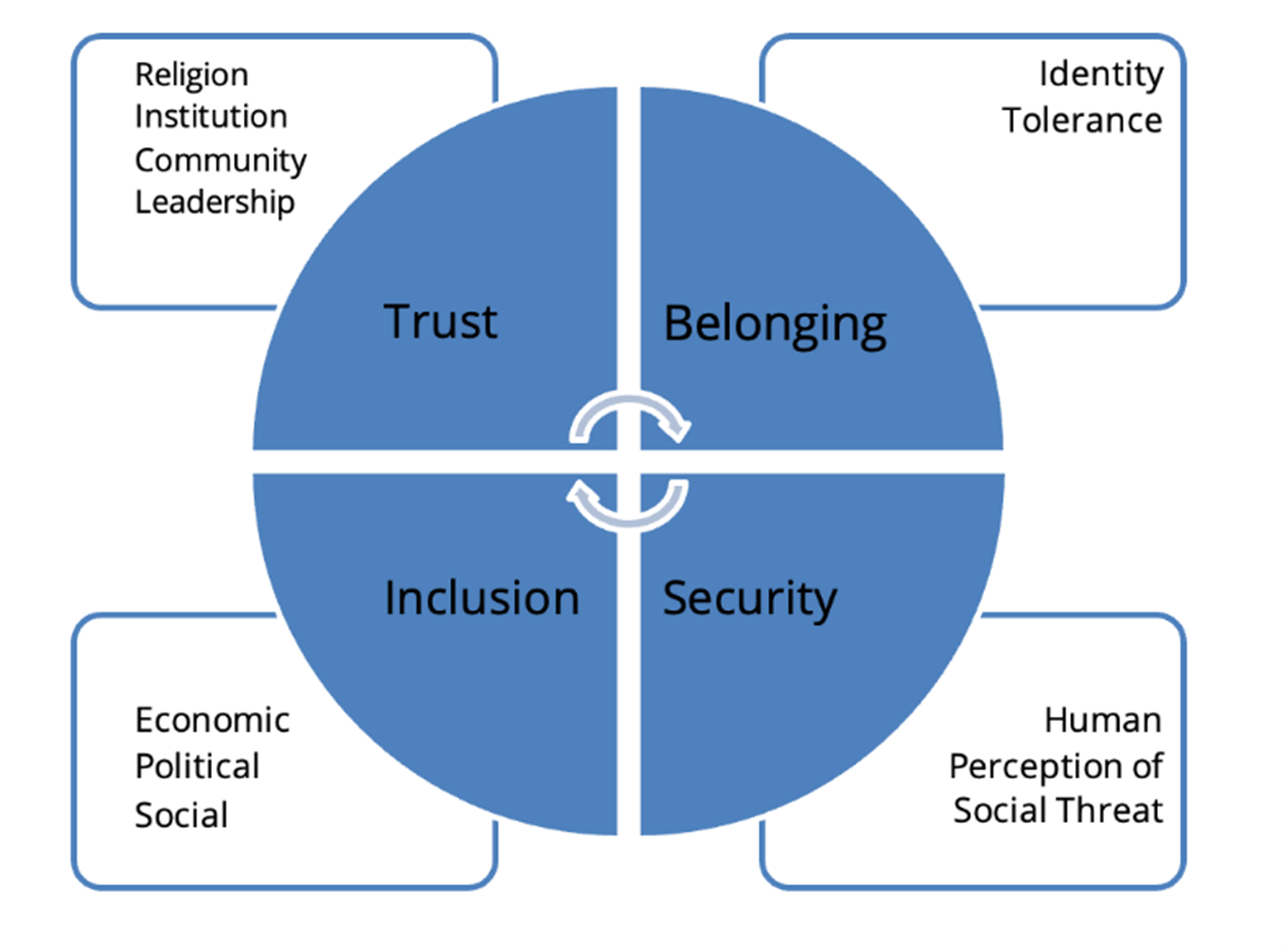By Chikako Kodama, former Governance Chief Technical Advisor
What is social cohesion in Cambodia?
July 24, 2023

Innovation training, June 2023
To talk about ‘social cohesion’, we would first need to understand what it is. The term is not new and various stakeholders use it although the concept varies depending on the context. In UNDP, social cohesion is described along two dimensions: vertical and horizontal. The vertical dimension refers to cohesion between people and state institutions, and the horizontal dimension indicates cohesion among people- within and among groups. Strengthening social cohesion in both dimensions is vital to achieving the Sustainable Development Goals (SDGs). After the COVID-19 pandemic, social cohesion was identified as one of five pillars to build forward better. This is because a crisis like COVID-19 often exacerbates existing social, political, and economic tensions and impacts the social fabric. This is why social cohesion matters for resilience and future development in Cambodia. The concept of social cohesion is deeply embedded in social and historical contexts and evolves with its underlying norms. This is the reason why we started exploring what social cohesion means in Cambodia with our partner, the Future Forum, back in 2021.
Finding the right word in Khmer
Since social cohesion is closely related to the social and historical background of the country, the different Khmer translations used to refer to it were often inconclusive. The Future Forum proposed the Khmer translation ‘សាមគ្គីភាពសង្គម' or ‘sustainable peace’ to refer to the concept of ‘social cohesion’ based on discussions with experts and in-depth examination of background materials. This is because sustainable peace is often achieved through organically cohesive societies. This translation highlights that ‘there should be no dominant group enforcing a perception of social cohesion’ and considers inclusion and diversity as central.
Cambodia achieved high economic growth over the last two decades and has progressively healed from the collective trauma and the devastation experienced under the Khmer Rouge regime. It also managed a swift recovery from the recent pandemic. Capitalizing on such achievements with almost two-thirds of the population under the age of 30, the future human development and prosperity in Cambodia will be centered around building trust between people and state institutions and among the diverse groups in the Cambodian society.
Four different dimensions
Social cohesion in Cambodia has four dimensions: trust, belonging, inclusion and security. These were further delineated into 11 sub-dimensions with emphasis on-their inter-connectiveness (Figure 1). This contextualization, shows that for strengthening vertical trust between people and state institutions, all aspects of economic, political, and social inclusion do matter. The horizontal trust within the community depends on the sense of belonging, tolerance and respect for diversity. This implies multiple pathways which are mutually reinforcing for strengthening social cohesion. The full report can be acessed here.

Turning a concept into reality
This conceptualization was put to the test by young Cambodians who shared insights and policy recommendations on issues they face in their everyday life that affect social cohesion. One young research fellow identified traditional markets in Phnom Penh as physical space for nurturing the sense of belonging and proposed two courses of action to protect the underlying social and communal fabric embedded in markets. Another researcher highlighted the importance of supporting women-owned businesses for a more inclusive economic growth and the need to tackle patterns of exclusion and limited opportunities. Women’s unpaid care work was raised as one of the root causes for women’s economic exclusion and actions at the household level were proposed to share the burden and leverage women’s potential. Another visionary recommendation focused on a more inclusive city design. Designs which prioritize active commuting – biking and walking- and public transport’ that will not only lead to equitable mobility but also more inclusion, trust and belonging to the community thanks to social connections.
Understanding social cohesion in the context of development is key to the principle of leaving no one behind, particularly given the rapid but unequal economic growth in Cambodia. It is also key for promoting civic engagement and understanding people’s motivations and priorities to build effective, accountable and inclusive institutions.
This work was conducted as a part of the project ‘Building Capacities for Civic Engagement, Peacebuilding and Inclusive Dialogue: Towards Inclusive and Participatory Governance’, funded by the Government of Japan.

 Locations
Locations



